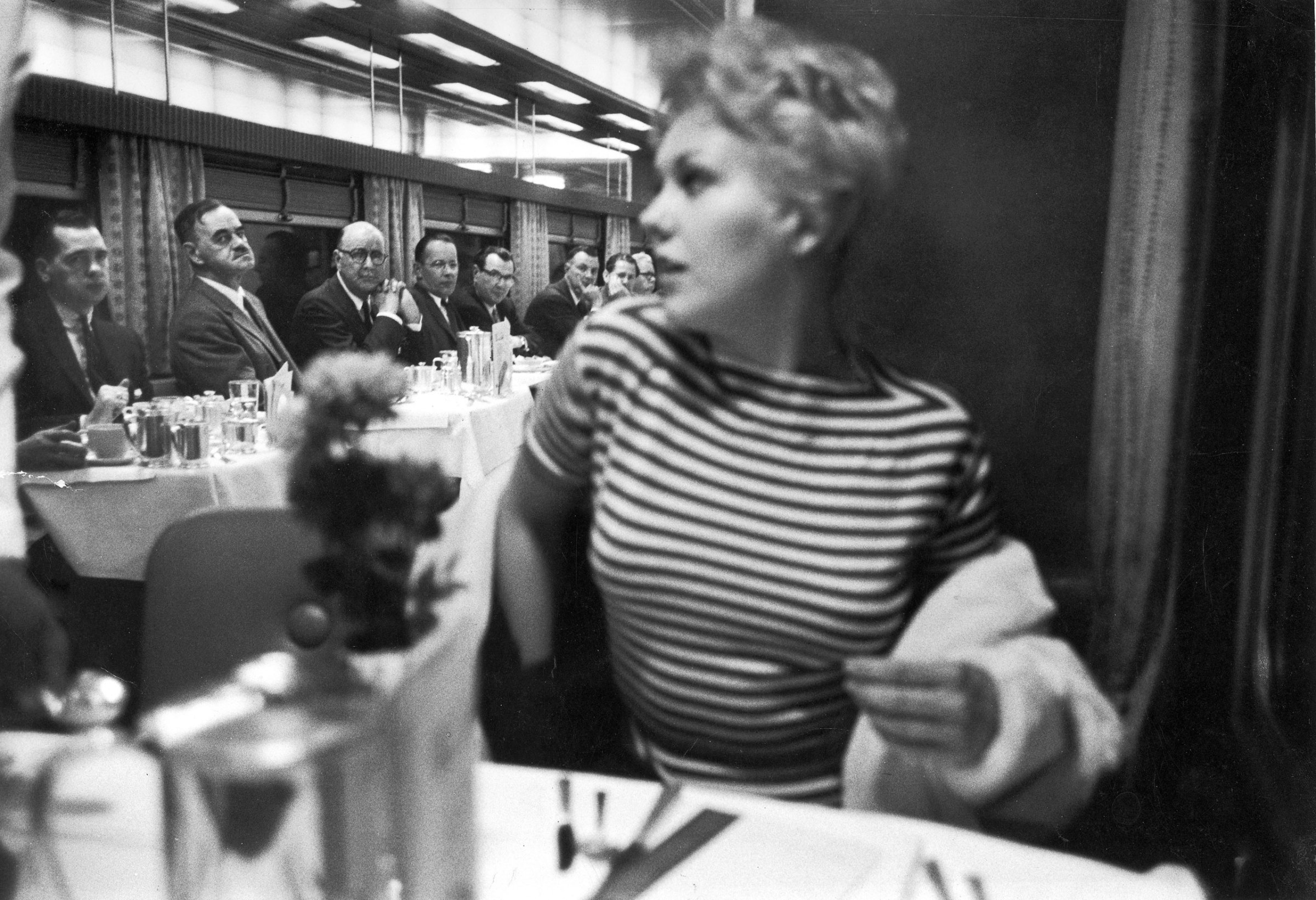
In the early 1950s, right around the time she stole scenes as a pretty young thing driving Jack Lemmon nuts in the oddly titled 1954 comedy, Phffft!, Kim Novak caught the eye of LIFE magazine’s photographers, who were charmed by her talent, her haunting beauty and her determination to be not merely a star, but a genuine actress. Their fascination with the young Novak proved prescient: In the coming years, she would become one of the most accomplished and versatile movie stars of the decade, with credits including The Man With the Golden Arm, Pal Joey and, most notably, Hitchcock’s wholly unsettling masterpiece, Vertigo (1958).
In 1956, as her career was truly taking off, Leonard McCombe photographed Novak for a major cover story. Just 23 years old at the time, the actress was starring in the movie Picnic—but was still uncertain of Hollywood and her place in it. Six decades after the peak of her career, LIFE.com reached out to the gracious Ms. Novak (b. Marilyn Pauline Novak on Feb. 13, 1933, in Chicago) to find out what it was like to appear so prominently in LIFE at such a young age.
“I hoped to show the world my soul,” Novak told LIFE.com, flashing back to that confusing time. “I believed that fame had found me for a reason that I didn’t quite understand yet, and that LIFE magazine would help to give me a voice. Bottom line, I wanted the world to see that I was not just another Hollywood pretty face or sex symbol—but the real McCoy!”
As lovely as McCombe’s March 1956 cover shoot turned out to be, and as flattering and insightful as the story was, Novak admits feeling disappointed with its direction.
“Looking back,” she says, “I wish I had the opportunity to respond to more real situations. I’ve always been proud to be a reactor rather than an actor. For the cover shot I was handed a matching lavendar umbrella, sweater and gloves — then told to look into the camera and smile. I wanted a reason to smile, and was not yet a good enough actress to invent one.”
The McCombe photos inside the issue, however, were more accurate representations of what it was really like to be Kim Novak in 1956. For instance, of the photo in this gallery that shows her in a dressing room, breaking down in tears after being asked to model a dress and then merely cue a performance by a costar, Novak says: “I was distraught and even wrote a poem through my tears because I felt taken advantage of in my first major television appearance. I would have preferred it if LIFE used one of those more honest photos for the cover.”
McCombe followed Novak to appearances, fittings and even home to Chicago, but none of the pictures he made in all those weeks with her is more memorable and evocative of that time than the famous, first photograph in this gallery. On a New York-bound train, the stunning young star removes her jacket as several male passengers unabashedly gape. McCombe, Novak says, “captured a special moment in time. I’m pleased to have been the spark that started a fire in the train’s dining car that night.”
During that trip home, Kim—known as “Mickey” to her family—found that having McCombe capture not only her professional life but also her personal one was almost surreal. “The two worlds were so different,” she recalls, “and I didn’t know how to fit in either one.”
The third image in this gallery, meanwhile, subtly captures the actress’ ambivalence. “In a Beverly Hills restaurant,” read the caption to the photo, “Kim Novak sits with a faraway look as agents Al and Wilt Melnick hotly discuss her blossoming movie career.”
Today, Novak admits that her expression was not so much a dreamy “faraway look” as one of concern for her future. “I worried, because I was being treated like a commodity, and I didn’t know what to do about it,” she says. “I only knew I didn’t like it.”
While she might not have liked the sometimes brutally commercial aspect of moviemaking, stardom certainly had its perks—for instance, as in slide #7 here, where she “falls subconsciously into role of old-time movie queen while trying on $12,500 mink rented by studio designer Jean Louis.”
“Yes, I loved glamour,” Novak tells LIFE.com. “When I put on the gowns of Rita Hayworth, Greta Garbo and Joan Crawford, I felt transformed into someone else. It seemed like I could feel their energy running through my body.”
Of her favorite leading man, Jimmy Stewart, who starred with her in both Bell, Book and Candle and Vertigo, Novak remembers that “he could make me feel like I’d just slipped into my favorite warm fuzzy slippers by taking my hand when a gossip reporter walked on the set. He could make the whole world go away when things got to be too much for me to handle.”
[MORE: Read Richard Corliss on Vertigo being voted the greatest movie ever]
Though she enjoyed much success in Tinseltown, Novak would eventually retire from acting and find fulfillment elsewhere. Married to veterinarian Robert Malloy for more than 40 years (Novak is a lifelong animal lover), today she lives and paints in Oregon. She has had some tough times—a serious, bone-breaking horse-riding accident in 2006; evidently successful treatment for cancer in 2010; depression and treatment for what she herself called, in a 2012 conversation with TCM’s Robert Osborne, bipolar disorder—but she has come through.
“After Harry Cohn died—he was the head of Columbia Pictures, where I was under contract—the choice of good scripts seemed to die with him,” Novak recalls, explaining her decision to leave the movies behind. “I grew tired of waiting for that good role to find me. I left Hollywood and the life of a movie star to make a path for my artistic desires without the handicap of false expectations. Today, when I’m not riding my horse in the mountains of Oregon, I’m painting the life around me, the life that I love. I am content.”
Liz Ronk, who edited this gallery, is the Photo Editor for LIFE.com. Follow her on Twitter @lizabethronk.
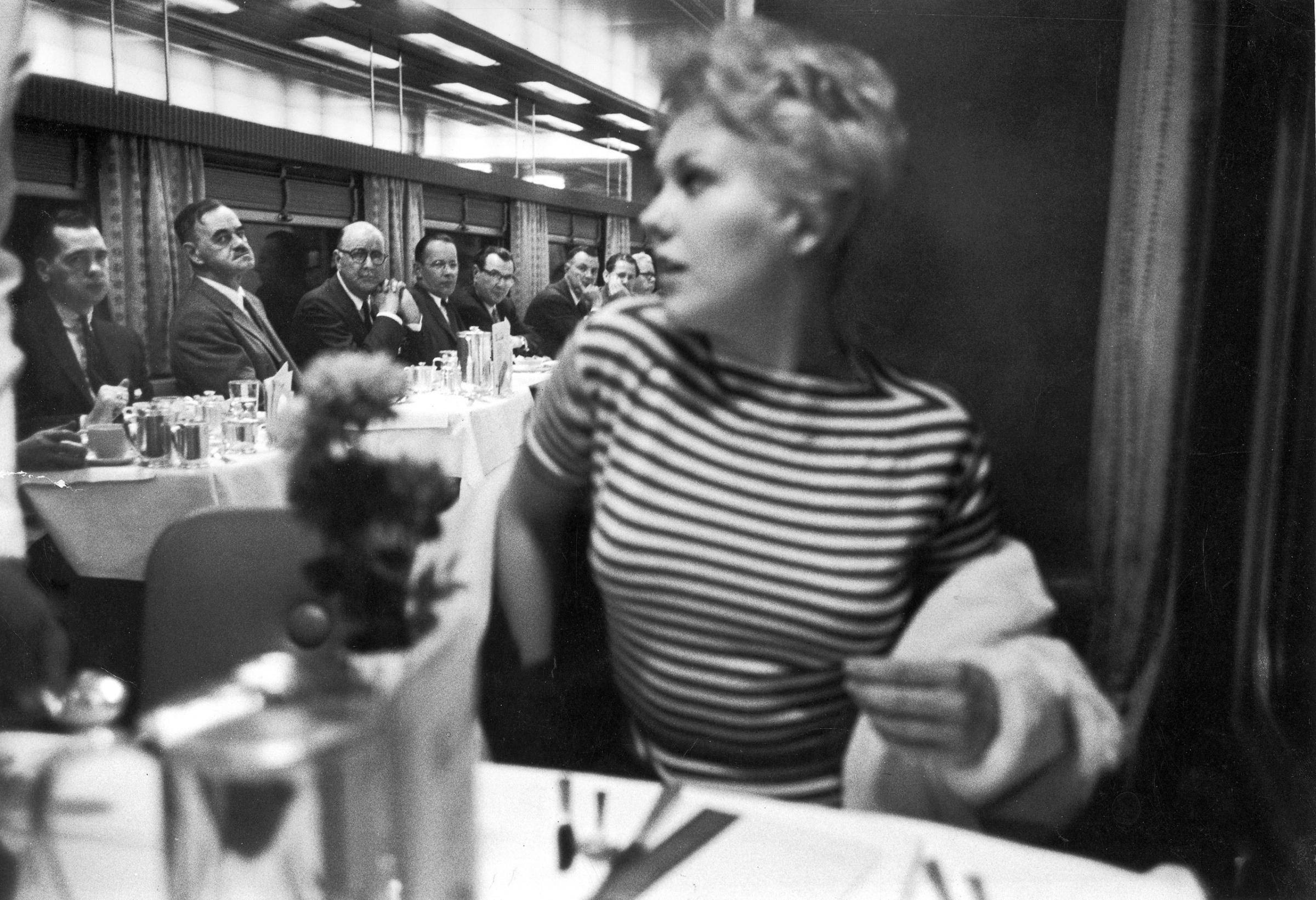











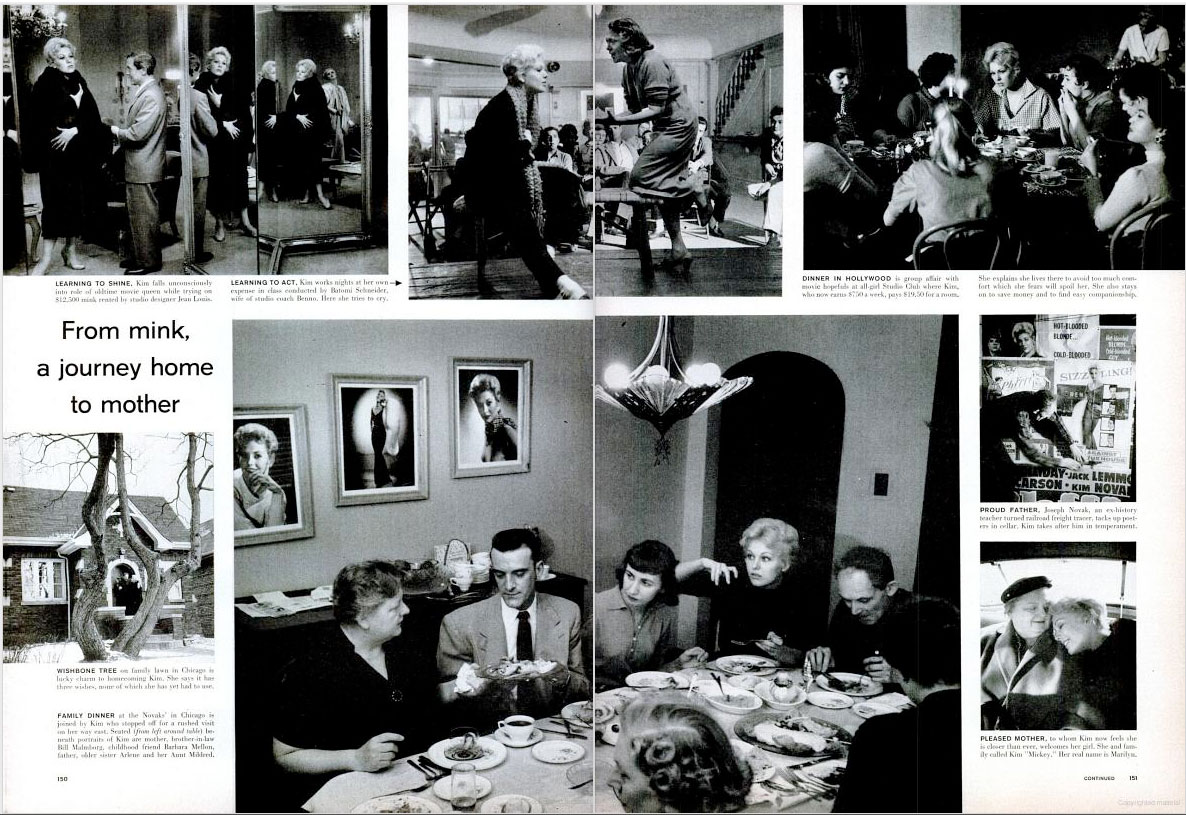
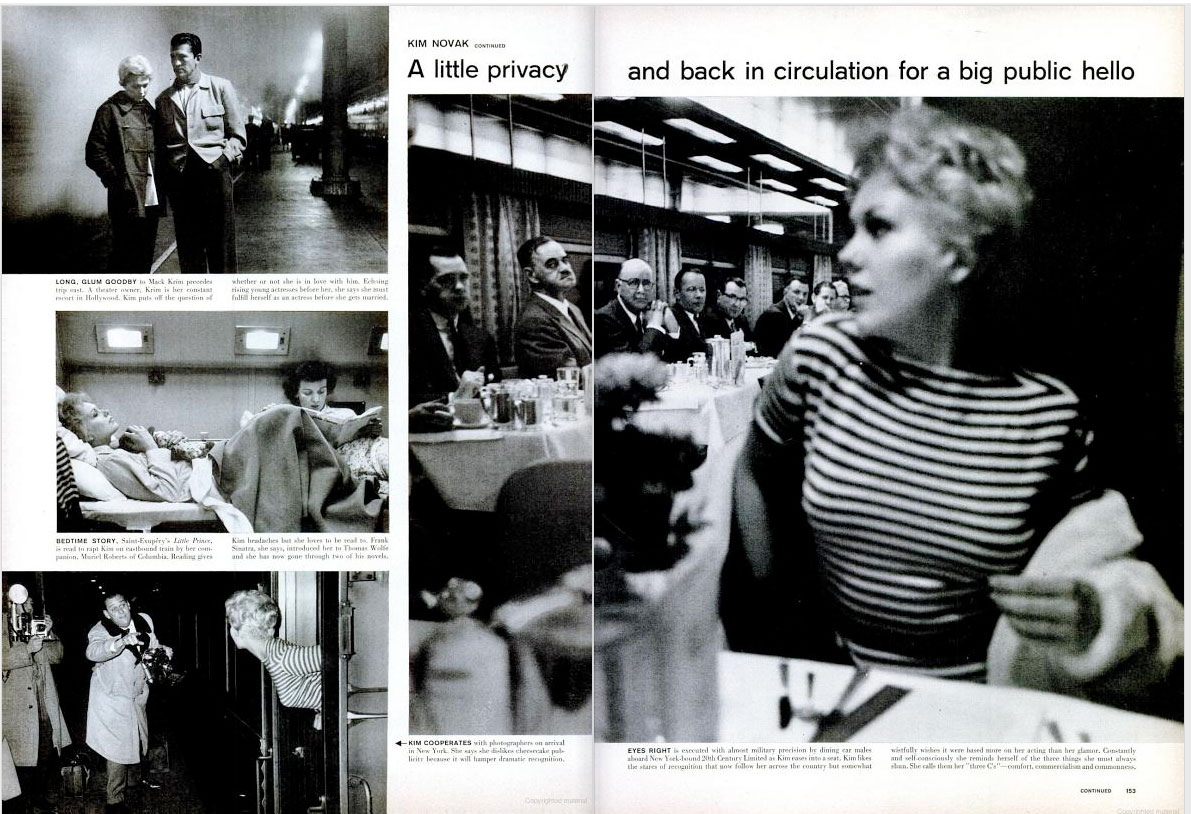

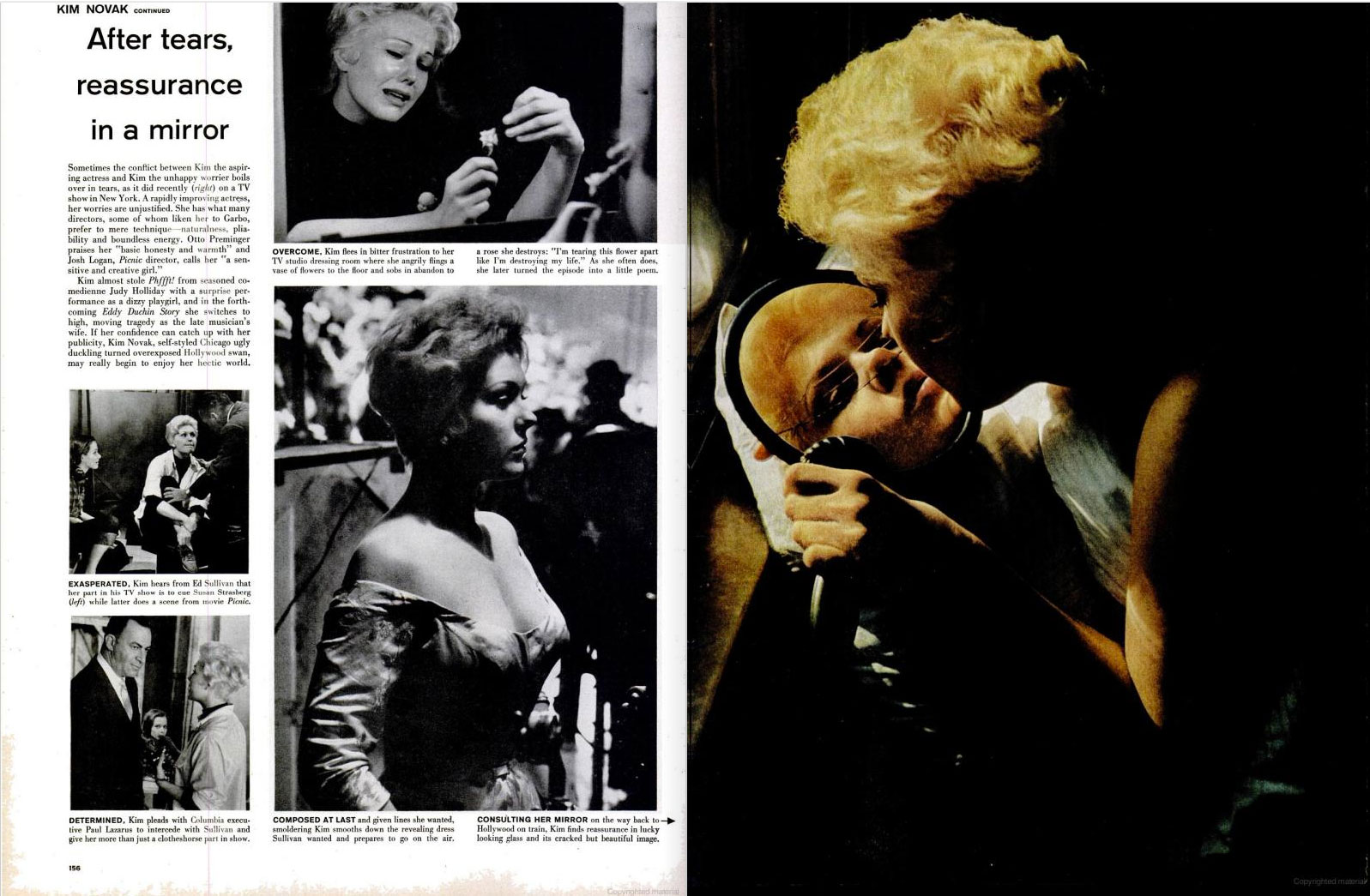
More Must-Reads from TIME
- Cybersecurity Experts Are Sounding the Alarm on DOGE
- Meet the 2025 Women of the Year
- The Harsh Truth About Disability Inclusion
- Why Do More Young Adults Have Cancer?
- Colman Domingo Leads With Radical Love
- How to Get Better at Doing Things Alone
- Michelle Zauner Stares Down the Darkness
Contact us at letters@time.com